
Burn-up charts & story points: the weird world of intrinsic motivation
Capturing a task for your Scrum board is as simple as grabbing a small scrap of paper, jotting the task down, and putting it on the relevant place on your board. This is all that is required by official Scrum guidelines, so everything else in this post covers complementary and common ideas that are used by a lot of Scrum teams, but you by no means need to. In particular we are going to focus on how ‘story points’, in combination with a ‘burn-up chart’, can really boost your motivation.
Traditionally, each task is written on a different colour post-it note, although we now use pieces of coloured paper instead. Each colour equates to a life category, such as ‘House’, ‘Health’, etc. We also write a number onto each task; these numbers are called ‘story points’ and are meant to represent how much effort a task will take.
Story points
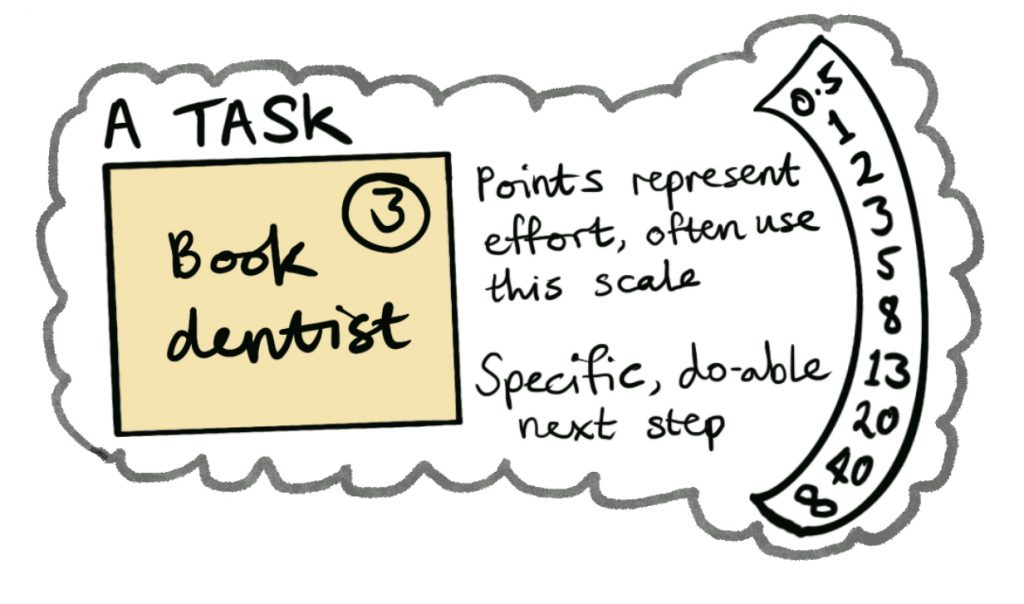
The name ‘story points’ come from ‘user stories.’ Story points are just numbers, and they don’t have any meaning in themselves; they show how much effort we think one task will take in relation to others. So for instance, something easy like taking your daily vitamins might be half a point. The ‘medium’ size is usually a 5, with a scale being used that resembles the Fibonacci sequence: 0.5, 1, 2, 3, 5, 8, 13, 20, 40, 100, and ‘infinity’. Often teams make a rule in their ‘definition of ready’ to say that if any task is bigger than a 13, it needs to be broken down into smaller tasks before it’s done.
The key thing about story points is that they are not supposed to be directly related to how long the task might take. Instead, they are supposed to represent the effort the task will take. We find this a useful distinction, because sometimes there is a task (like filling out a form) that will take Francis five minutes, but we give it a higher number of story points for the mental effort it’ll take to get over his reluctance to tackle it.
Story points and motivation
A lot of Scrum teams keep count of how many story points they manage to finish in each sprint. This number is then used to track a team’s ‘velocity,’ and it is used to estimate how many story points’-worth of tasks should be brought into the next sprint (‘capacity’). However, there is a lot of evidence that humans find predicting the future to be very difficult, and trying to guess how much effort each task will take is pretty much doomed to failure.
So if story points are only debatably effective as an estimate of how difficult a task is going to be, or how much you can fit into a sprint, what’s the point of using them at all? Well. The weird thing is, Francis and I have both found tracking how many story points we’ve managed to do in a day and over a sprint to be extremely motivating. It’s like scoring points in any other type of game. We want to see how many we can get, and see if we can beat that next time.
The doubly weird thing is that the points we earn don’t translate into any real-world reward. A lot of people have asked me about whether we ‘save up’ points until we can ‘cash them in’ to do something nice, like go to a restaurant together. But neither Francis or I liked that idea; we want to go to the restaurant anyway, and if we had to cancel it because we haven’t earned enough points, we would feel deprived and like we were punishing ourselves.
Also, adding any type of external reward would take away from the intrinsic motivation inherent in the story points themselves. And when something has intrinsic motivation for you, that is not to be sniffed at, especially if you have ADHD. Of course, you may have a different experience, so it’s up to you how you use your story points.
Burn-up games
One thing that definitely enhances the intrinsic motivation effect of story points is the use of a burn-down chart. A classic burn-down chart simply plots the number of story points achieved each day against the total for the sprint, so that hopefully you see the line of actual story points done following the predicted line down to zero by the end of the sprint. However, we found the idea of trying to match the points we’ve done to a descending line on a chart much less motivating than the idea of adding points up towards a goal—hence ‘burn-up’ instead of the traditional ‘burn-down chart’.
In essence, we turned it into a way to track how many points we’ve done in each sprint, with the goal to try and do even more the next time. From this basic concept there are lots of potential ways to make it more exciting, starting from some very simple games to as elaborate as you want to go.
The simple burn-up games
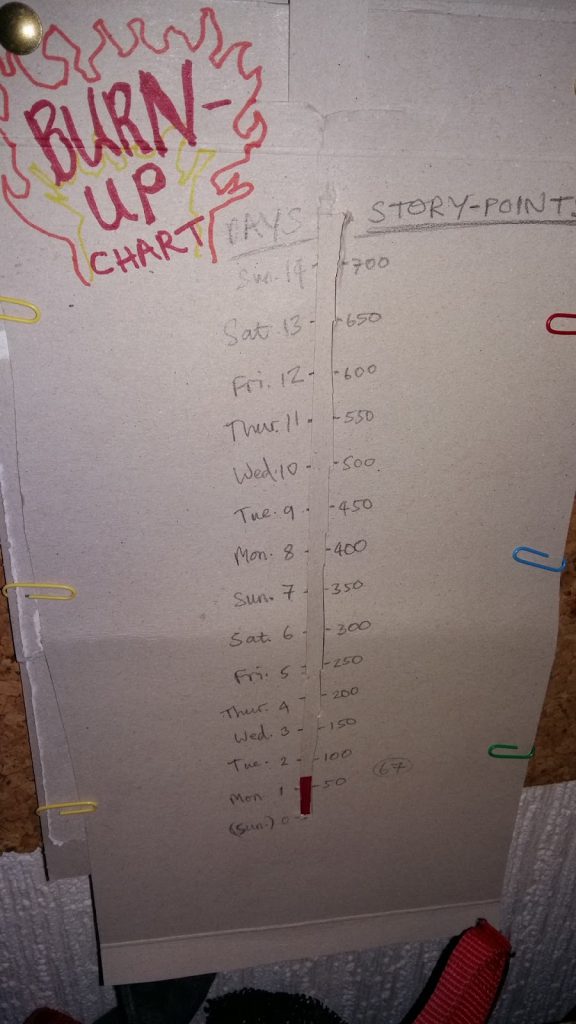
Our first, stalwart burn-up chart was a very rough cardboard version of a thermometer. We would write in pencil on the cardboard how many points we had done each day and add it to the total so far for the sprint. The final total would go into our notebook, we would erase the pencil on the burn-up chart, and start again next sprint, trying to get more points than before. We would occasionally adjust the scale of the thermometer to reflect an ambitious but not unreachable goal number at the top.
Your burn-up chart could look like anything you like, including a simple line-chart. You could turn it into a picture instead, so that it shows you climbing up a mountain and trying to get to the top each sprint, or anything else you like.
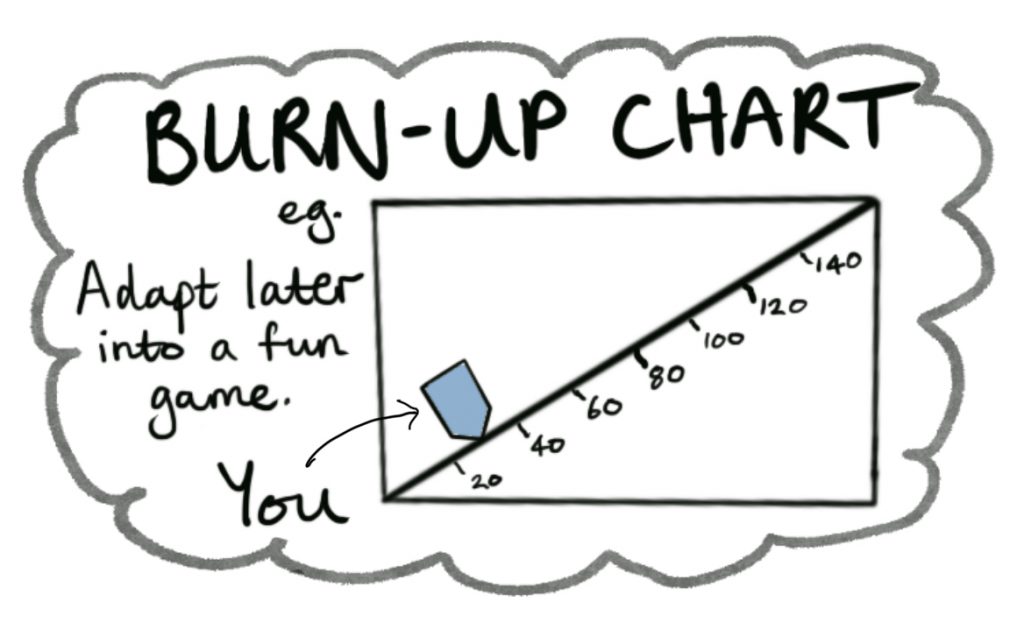
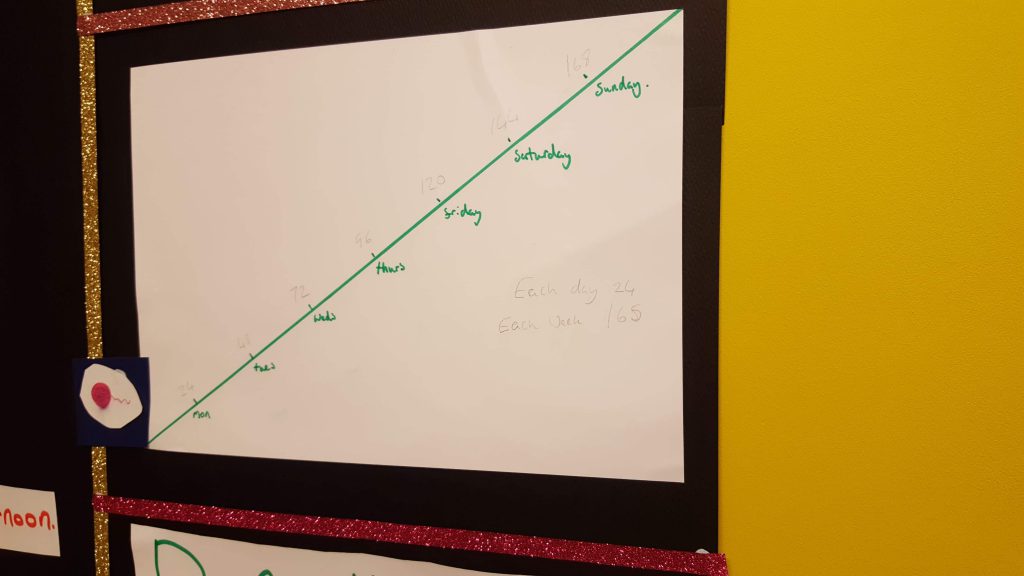
Another simple idea we’ve used before is to turn our points into a race between us. Our avatars would move according to how many points we had each done in the day, until one of us crossed the finish line first. However, we didn’t like the competitive nature of this so to adjust that idea into something cooperative, we made it so that a monster was chasing us, moving a set number of points a day, and we had to stay ahead of it.
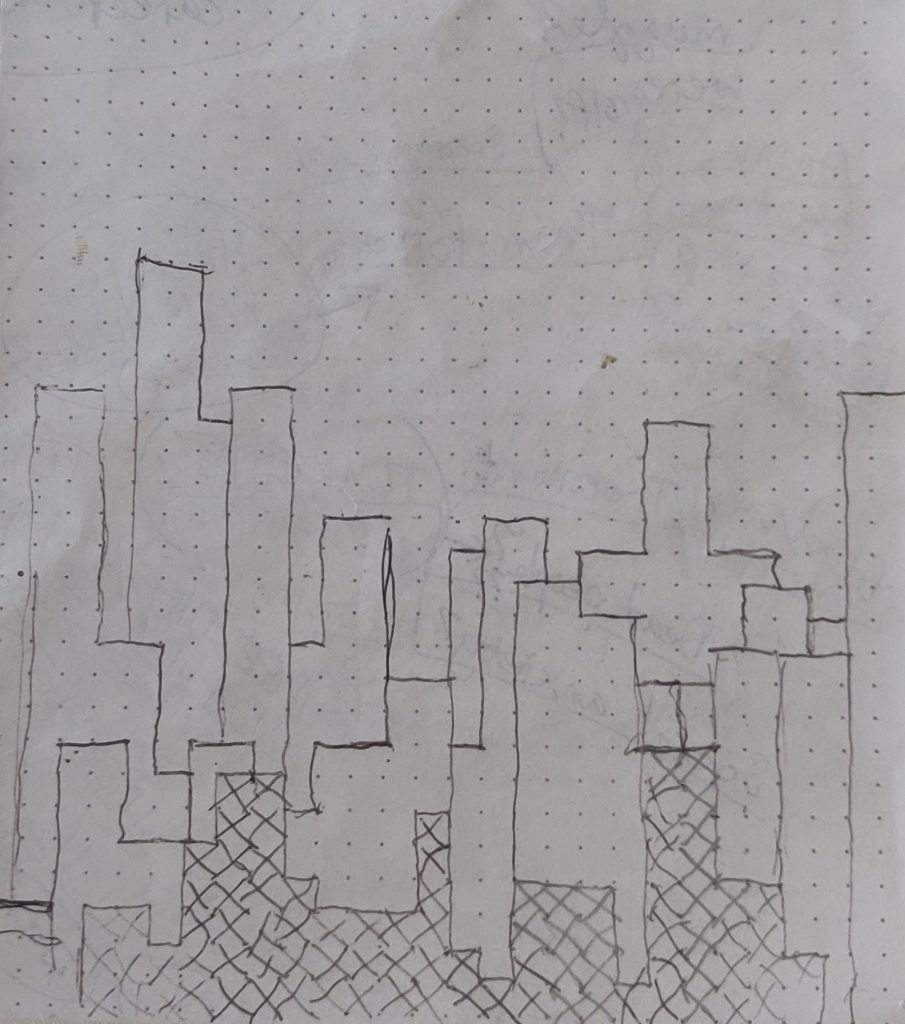
Or you could make it more constructive and less stressful: perhaps you could earn a certain number of Lego blocks for a certain number of points in a day, and use them to continue building something together. You could colour in a certain amount of a colour-by-numbers picture or add pieces of coloured paper to build up a mosaic, or a number of stitches or rows to a scarf. Recently we have essentially just been keeping a bar-chart, but by using different colour pens and drawing new layers behind the first one, we make it look like a city sky-line.
If these aren’t intrinsically motivating enough, you could convert points into a number of pebbles or marbles to drop into a pot, and when that pot is full the family gets a reward, such as a day out together.
The complex burn-up games
There isn’t really a limit to how far you can go with creating games out of earning daily story points. Francis took it to a new height when he single-handedly designed a four-foot-high fantasy map for our little avatars to travel through, complete with various obstacles along the way and an increasing number of required points per day to make it to the next location. He also came up with a whole pack of cards for ‘Items’ and for ‘Encounters.’ He used his extensive gamer background and creativity to its full potential and it was really fun, although it did make doing the Daily Scrum take a while. We completed the whole run a couple of times (each time took weeks), but eventually our enthusiasm waned and we returned to simpler versions of a burn-up chart. But if this is something that appeals to you, let your inner nerd run wild!
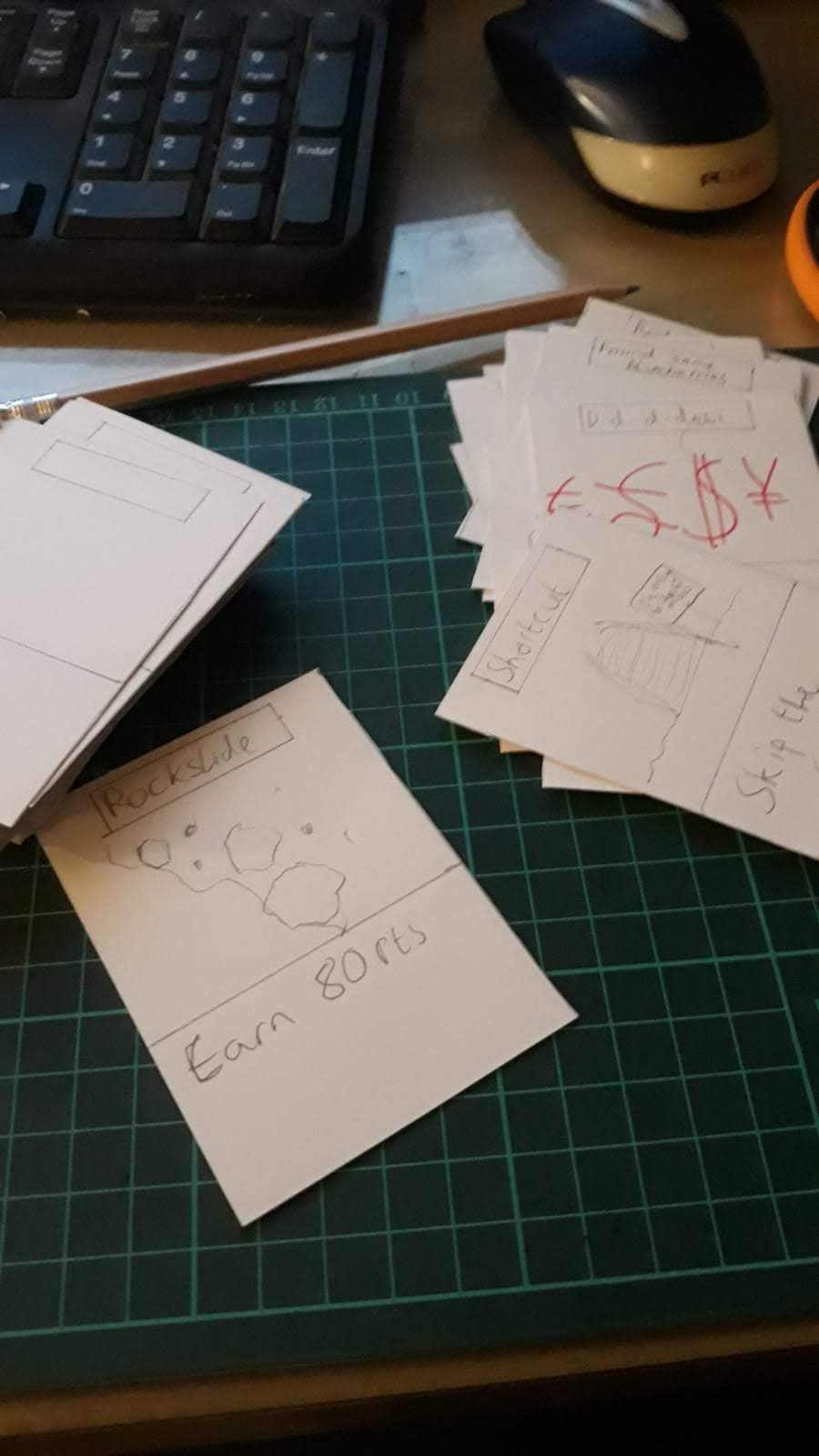
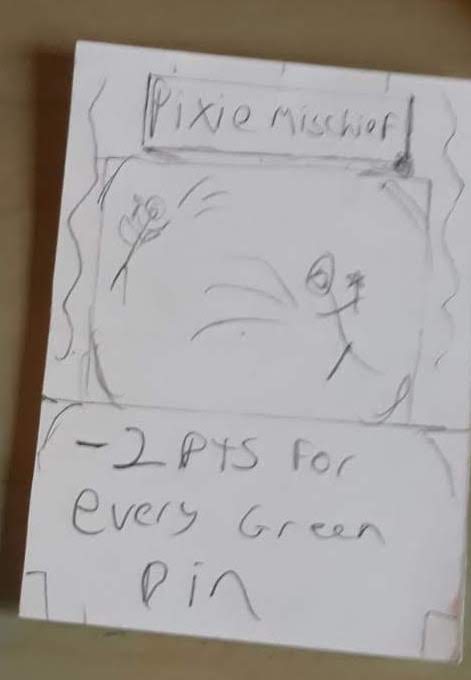

A small caveat: please, if the idea of constructing something this complex seems intimidating, or like something you ‘should’ do to have the ‘best’ Scrum board, remember that that is not the point! Francis did this because he wanted to. It is better to use Home Scrum without these bells and whistles than to feel any sense of extra pressure and expectation from wanting to do it perfectly. Even this burn-up game was never perfect; we meant to colour in the map, get the cards properly printed out, rebalance all sorts of game mechanisms, and we never got around to it. It was still awesome. Don’t bother doing one hundred percent of your idea: aiming to do seventy percent of it will work just as well nearly all the time.








